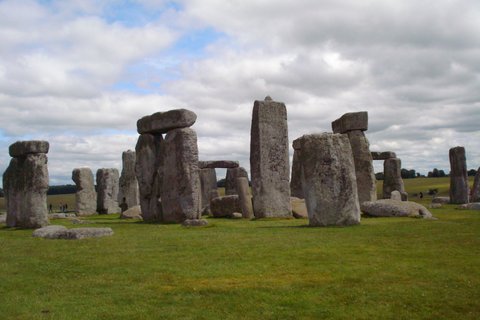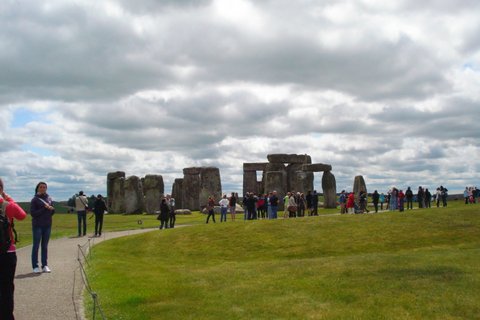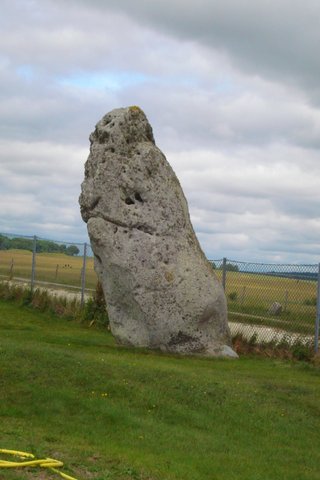It was on my first visit to Stonehenge some years ago that I experienced the magic of the stone circle. I’d been visiting a friend who was a psychic while I researched for a novel set on the Salisbury Plain. She urged me to go to Stonehenge and stand inside the inner circle to see what psychic and spiritual feelings came to me.
I still recall that day clearly, the awesome sight of the great blue stones rising out of the Salisbury Plain. There were few, if any people around. At that time, the stones were not roped off and you could wander freely. I went into the sacred site and stood in the center a while to meditate. The immensity of that moment stayed with me. I only wished I had been there on the Midsummer to experience the glow of the rising sun over the Heel Stone. Still, it was a spiritual experience that would long be remembered.
What are the Stones? And how did they get there? There are a lot of legends told about Stonehenge. There are many books written about them including Bernard Cornwell’s novel “Stonehenge” and Edward Rutherford’s “Sarum”. The oldest known depiction of Stonehenge is in a manuscript of the “Roman de Bruit “ by Wace in which it claims a giant helped the sorcerer Merlin build Stonehenge. In the 12th century Geoffrey of Monmouth also included this story in his Historia Regum Britannicae attributing Merlin as the builder. According to Geoffrey, the rocks of Stonehenge were healing rocks called the Giant’s Dance, supposedly brought from Africa to Ireland for their healing properties. In December 2011, geologists announced the discovery of the exact source of the rock used to create the stone circle as coming from a rock outcrop called Craig Rhos-y-Felin in Pembrokeshire, Wales, nearly 200 kilometers (130 miles) from Stonehenge. There are many stories about how these massive monoliths were brought to the site, perhaps floated on rafts or dragged by men. It’s mind-boggling to think of it and easy to understand how so many tales of ‘magic’ were spun around the origin of Stonehenge.
Of course, dispelling these myths about the stones, archaeologists believe Stonehenge was built between 3000 and 2000 BC. The surrounding circular earth bank and ditch date slightly earlier than this. Some archaeological evidence found that it could have been a burial ground, as cremated remains have been found there from as early as 3000 BC. It is certain that Stonehenge was a place of religious significance and pilgrimage and revered by the Druids. Since 1986 the site has been legally protected and added to UNESCO’s World Heritage Sites along with nearby Avebury Henge.
I visited Stonehenge again recently. This time the site was swarming with people. Just outside the entrance to the henge is a large rough stone known as the Heel Stone. At summer solstice if you stand within the stone circle, looking north-east through the entrance, you will see the sun rising about this stone.
The public no longer has access to the inner circle except for the summer and winter solstice, or the spring and summer equinox, and you are not allowed to touch the stones, but like the other visitors, I followed the path around the perimeter. At specific points, I stopped and listened to recordings that tell the story of the stones on a hand-held recorder. In many ways, though I did not experience the same ‘magic’ as I had on my first solo visit there, it was a more informative way of observing the stones and learning about their history.
I went to Stonehenge by coach from Salisbury, but you can take day trips there right from London.
Written by and photos by W.Ruth Kozak for EuropeUpClose.com





Winter Solstice at Stonehenge
Thursday 6th of November 2014
[…] the winter solstice at Stonehenge is a dark and cold logistical challenge that deters less dedicated tourists and, as a result, is a […]
Buzz June 2013
Tuesday 4th of June 2013
[...] Kozak had two stories published in EuropeUpClose this month: Stonehenge and Samothraki, Greece. Her novel “Shadow of the Lion” is currently being read by a publisher [...]
Winter Solstice at Stonehenge | EuropeUpClose.com
Thursday 16th of May 2013
[...] the winter solstice at Stonehenge is a dark and cold logistical challenge that deters less dedicated tourists and, as a result, is a [...]
ruth kozak
Tuesday 14th of May 2013
I would definitely suggest going to visit Stonehenge if you have never seen it before. In spite of the crowds that may be there, with the recorders you can use while you browse around it you will learn a lot. It's a very interesting and important historical and archaeological site. Be sure to see nearby Avebury too as well as Old Sarum. Fascinating places.
Thomas Dembie
Tuesday 7th of May 2013
I'll be in London in about 2 months. Still debating whether or not to visit the site. Would you recommend it? I hear it's quite touristy and there isn't much to see/do other than walk the perimeter and take a few photos...